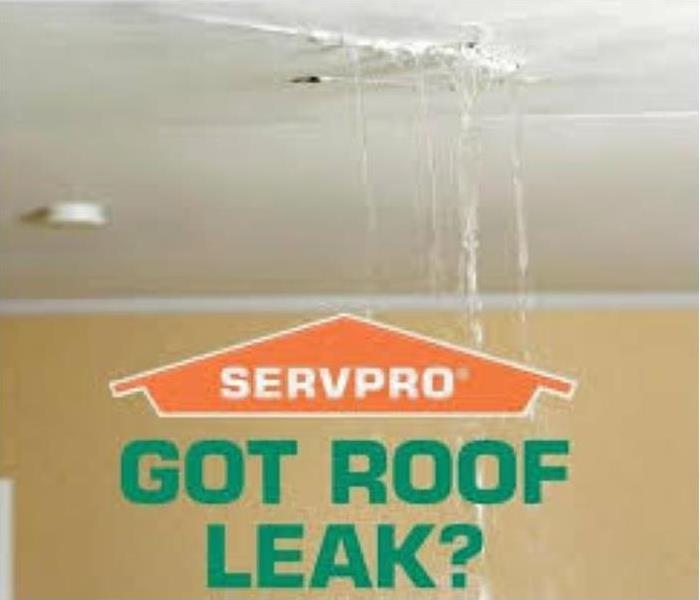The 5 Most Common Reasons Behind Roof Leaks
11/2/2020 (Permalink)
Having a leak in the roof is a pain for homeowners and one that can cause serious damage with time. Many times, roof leaks are not noticed right away because they start initially damaging the attic before they are visible on the ceiling of the home.
Understanding why roof leaks happen can help you prepare for and prevent them from occurring in your home.
Common Reasons Why Roof Leaks Begin
- Wear and Tear Resulting From Age. With every variation in temperature, roofs are designed to expand and contract—meaning every summer, winter and temperature variation in between, there will be a bit of movement involved, which can eventually lead to cracks and vulnerabilities in the tar below the shingles.
- Breakdown of Flashing or Seals Around Features. Anytime a feature such as a chimney, dormer or vent intersects with your roof, a seal or a flashing will be installed to keep water out. Over time, these seals or flashing installations can begin to warp and wear, letting in water.
- Missing or Loose Shingles. Shingles are your home’s first line of defense against weather, so if one becomes loose or goes missing, there is a good chance a leak might develop. Shingles can get torn off by debris or simply come loose with time, but it is easy to do a visual inspection to determine if they are all there.
- Clogged Gutters That Cause Puddles. It is recommended to clean the debris from your gutters regularly, as roof leaks can develop otherwise. When water is unable to be drained away, it will sit in puddles on your roof and can eventually start seeping into the wood underneath.
- Excessive Moisture Deposits. If your roof is designed with several levels and one level deposits moisture onto another, the bottom level can become oversaturated with moisture if heavy rainfall occurs. This can overwhelm the roof’s defenses and allow water to saturate the shingles and begin seeping in.
Have you experienced a roof leak in your household? If so, our trained water restoration technicians are here to help you. Contact us at any time to learn more.






 24/7 Emergency Service
24/7 Emergency Service
